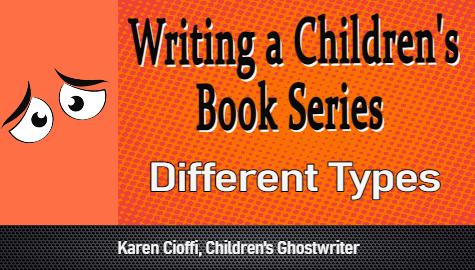I attended another ‘live’ workshop through SCBWI. This one was with Senior Editor Matt Ringler with Scholastic. He’s in the series department for chapter books, middle grade, and young adult.
If you write in these genres, you’ll want to read on!
In case you weren’t aware, Scholastic is the only publisher that deals solely with children’s books. One out of every three children’s books is sold by Scholastic.
That’s pretty impressive.
Scholastic sells their books through their publishing houses, the Scholastic Reading Club, and Book Fairs. They sell to 35 million children in more than 130,000 Fairs across the country, annually.
Okay, that’s enough about Scholastic, now on to great children’s writing tips.
Children’s books have specific age groups:
Early chapter: 6-8 age group
Chapter books: 7-10 age group
Middle grade: 8-12 age group
Young adult: 12+ age group
Ringler noted that in the ‘early chapter’ books, the rules are stricter. Getting the ‘reader level’ right is essential as are using age appropriate words.
He also noted that ‘young adult’ is not a genre, it’s an age group. The reason for this is that book stores have limited space for books and they separate children’s books by age.
What I found very interesting, is a series doesn’t have to follow through with the same characters.
The series could focus on a particular theme, maybe sports. Or, maybe the series focuses on a particular setting or time period, or other.
This gives the series writer great flexibility and freedom.
And, did you know that there are three different formats for children’s series?
1. The continuation.
The books in this format continue with the same characters and often the same situation, like in the Harry Potter series. These books are dependent on information in the prior books – you need to read them in order. You need to know what happened in the previous books to keep up with the story.
2. The standalone.
The books in this format don’t reference the prior books at all. You can pick up Book5 and be good to go. You don’t need any prior information to make sense of the story. And, they aren’t in any kind of sequence.
These books are independent of each other.
An example of this type of series is “Goosebumps.”
Ringler mentioned that when dealing with a standalone series, branding is super-important.
Getting the logo and cover design just right is necessary to help make the series a success. It needs to be easily recognizable as that series.
To get it just right takes months. All the departments involved need to be on board and approve it.
3. Sequential, but not dependent.
The books in this format are in order (sequential), but they’re not dependent on what happened in the previous book.
I think the editor mentioned that the “Puppy Place” series falls in this category. But, there was a lot of information, so please don’t quote me on this one.
Where does an editor get his projects from?
Ringler finds manuscripts from:
– Agents: they pitch their clients’ stories to him.
– Authors: existing Scholastic authors will come to him with another book they’ve written.
– Colleagues: other editors in Scholastic may get a manuscript that isn’t right for them but think it would be just-right for Ringler.
– Book Clubs and Book Fairs: they’ll need specific books for specific fairs. For example, focusing on the month of April, they want an April’s Fool book.
– Self-generated: these are ideas Ringler gets on his own. It may from browsing books stores, watching a movie or TV, or other.
Once the story is found, what’s the purchasing process?
This is the same for all editors. If they find a manuscript they’re passionate about, it goes to the Acquisitions Dept – everyone gets involved in the decision to purchase the story, or not.
Ringler noted that he can get rejected for a number of reasons:
– Scholastic has a similar book in the works
– They feel there’s not a market for it
– They just don’t like it
– Other reasons
The editor needs to fight to have his book chosen. It can take a year or more just to buy a book if things work out in the editor’s favor.
After the book is actually acquired, there are five steps that need to take place:
1. The editor goes over the first draft manuscript. This phase is about concept, story, clarity, etc.
2a. After the editor is done, it goes to the copyeditor for line editing. This phase is about grammar, punctuation, spelling, fact checking, and so on.
2b. Next, it’s on to character design. The illustrator will come up with a number of character designs that will be reviewed. The decision as to which should be used will be made.
3. Then it’s on to interior layout and design. The font to be used, where the illustrations are placed, the chapter heading style, and so on happen during this phase.
4. The fourth phase is where it’s all put to together with the cover, back cover, front matter, and so on. The book finally gets published at the end of this phase.
It will take around 18-24 months after the contract is signed for the author to finally have a published book.
To see Part2 of this article, visit: https://karencioffiwritingforchildren.com/2018/06/24/writing-childrens-series-3-elements/
 Whether you need rewriting or ghostwriting, let me take a look at your story.
Whether you need rewriting or ghostwriting, let me take a look at your story.
Just send me an email at: kcioffiventrice@gmail.com. Please put “Children’s Writing” in the Subject box.
Or, give me a call at 347—834—6700
Let’s get your book in publishable shape today!
